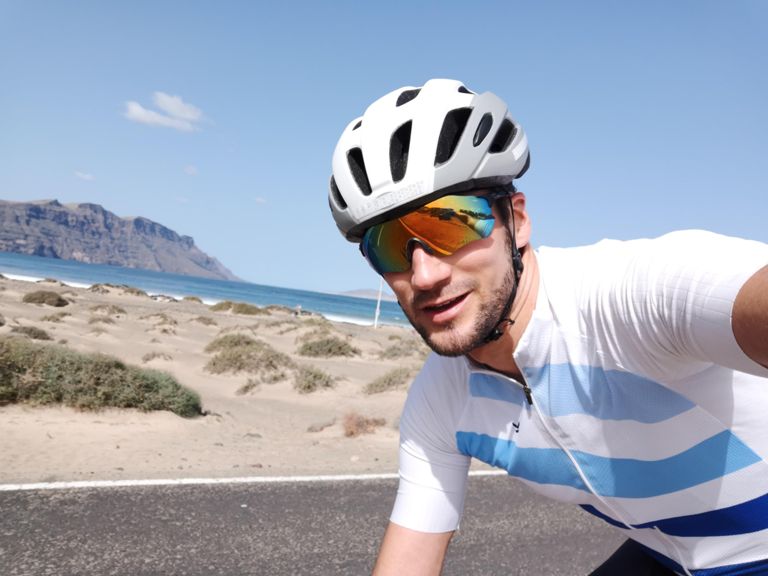That's made for flying
Ride on Strava by Jean-Claude: https://www.strava.com/activities/8498575267
115.4km - 3h56' - 1751m D+

yr|oD|rmqAKE_@?UCWMoAkAiByAs@y@c@w@Wg@a@eAU{@iBcLqAqHUcAQKI@yA`@wHdB[BMCMWe@eCc@{Ai@mAq@iAi@o@iMuL[]IGICGBMNMb@}@pAo@d@G\IRqArBg@n@qAlBkFrHkDbFc@v@Wn@U~@It@sD~b@YtB[|AWt@c@jAu@vAaAtAgHbJmApB}@vB_EdNeD`MoAfEeIrYw@xCMp@Gp@?d@Ft@Hb@Vx@nClGJXHj@D\B|@?`LD`CPpB\bCb@jBb@rAb@|@pF~IfAnB^|@\|@`AbDN\d@v@l@j@r@b@fGjChAn@jBbBjApAh@dARp@Hp@?h@If@Yr@EPAPFd@Xp@Hd@M|FKbLUnDoAhIEh@Bj@Jj@\~@pKdUVp@ZnATnBjBrYF|Ab@dHPnE@vBE~AKfA[tAg@fAm@~@}@~@w@j@c@Rc@NoATyBP_CJ{@AwAI_Iy@y@Cs@BkAR}F~AwGnBi@Ry@`@{GtD}@b@uBz@iEjAc@ROLa@`@MR[l@Wt@Wx@[xAUxAIx@Gx@@t@Dt@Jp@nBpIlDbPtDpQLz@NxAp@lML~ARnAtAtGXdBr@lG~AlP~AtN`AfJZhCLpAX`C^rB~AhHlCdL|FfWr@nCbG|PBR?TBNJLZXl@vAxAjBzB`ERX`@\D?JIlAwBTm@TgAN_@Lm@BIPGP?j@Th@PrCb@z@E~BHjA?vAHfHl@`Fp@ZLFJFLD`@H~IRdNBXT`ALrBAvHEh@Ol@BNLLdCpAnA~@xKdLjAfAvA`AfE|BfCfBtH`G`SnOj@j@\p@VVLDh@Hd@PfDhBb@Ld@Dd@Eh@KbF{Al@Kf@Gt@?dALh@Ph@b@n\bb@^j@\p@`BfEb@p@zBnCbA`AhA|@hZhSdAz@h@l@dA`BzNzVJ\BNFvAHr@f@~A`@z@Zf@dCxCVj@Jn@\lCHt@@h@Pf@B?L_@n@Uz@_@nD_AhASlEGlAEdT_B`ABp@Sn@KtAMbAEr@@v@Hx@Pd@NlBbA`BhA`@\nE|E`B|B^b@z@p@l@`@p@h@`@b@b@p@NLH@RGb@c@XM\G`@A~JRpANZFr@VlAn@l@j@h@r@zAfCf@r@l@l@jAr@r@Xt@PnHx@v@Lt@Rr@\fAt@bKpHdAh@hGzB`@RZZNFb@Jb@PzCrBtGxEnAv@~@ZtEx@nG|AjAZfAb@j@`@f@d@^j@Zp@Rp@f@~BB`@A`@D`@f@t@b@pANZTXZLpBZdFh@nAJrEh@^J^NZVh@|@dB~D~@`Cl@vBNX`AnAj@bAFXILKFM@M?a@MEBCFTbCBbBLZ}@hAW`@_B|CQb@]j@kBlBSLa@PEDEPBf@C\Ip@Mf@e@nAmA~Bk@bASPk@P}BV{@Ty@n@gDjDQLsAx@]Hk@QQAOFKNAH?t@ETi@v@[RUFUB{C@c@FSL[`@eFvKW^uA`BwGpHo@p@iB~Ai@h@k@p@kClDUTWPYJ[DgEPw@H_@L]ReA~@]Tk@Rm@@_@E}A[s@KqY{BuLeAaCY_ASy@[iBwAw@aAOKQCQ?QDw@j@OHQBkA@eCAe@Bc@Hi@RaAz@iGfJw@~@}@`AsBhB]R[FKF]`@qCzBeBbBk@z@{@|AcAnB]x@aAhDUn@Qb@ORk@^k@XkEnAy@BiAM[B]Pk@b@[R]XWNMFM?SGi@WgDgCgDsBkBkBy@k@iBg@{Ag@kG}BeD_BgAo@iB_A{@]i@IQAeABc@FcCn@c@HKFcCXuAVsCv@qFfBq@Po@F{B@IDCFWbAWj@QPa@Zm@Re@D_A?uFg@s@AYBWFo@TuG|CSHm@FU?k@EwASaCWk@A_BBWEMOG[OsKI{AYqBuA_ISw@]y@a@o@cB{Bo@mAa@iAsA}EI@]NaARyMnByAPwCRcHZuNx@wGVoAAsEWs_@cCgOOaKCi@Di@HiJ`CmAVcCVaBJuADaA@eGEuAHqFf@kCZaCd@uD|@y@L}@F_@?]E{@Wu@_@}CmBmAq@u@]oBo@w@OsBUeDYqAGw@Bu@DsYlBeKv@{[nBaALi@JcG`BuJhBw@La@Bc@A}BSoAS{@]}DmBa@M_@Es@Do@Lq@PaBj@a@HgADwCAqAB}@L{Cp@c@FQ?c@CiDi@m@We@c@U[O]Ia@Ea@As@F}EGy@YmCUu@mAuBSe@[oAOoAiJodAwBcUwHq{@o@uG?m@FUHQh@s@pAuAxAgBR_@JWHcA@uCC}GKcBSw@yCsIq@iCq@yCQuAcAqK_AuGUcAe@eA}HeOgAkBqB{CeAeBWk@oGiOOk@Ae@EQOKICY?w@BO?[K[Qq@s@a@k@e@cAMMOIQEu@As@?a@BcCb@_EZoc@xBiG\kBFgBAiGUuACwADoH^eA@aF[k@?wAFk@AwIw@i@Ki@O_DsA{@YsA[qGoAaA[qAq@wGwDw\yQgH_E}BuAoGcEgr@qb@uD{B}BwAUUQ[COCaAG_@y@oC{@yBMm@Gq@I_@oAcCY_AgA}Dq@aB{AyCWm@oFyOuFgN}P{b@qAuDs@kCeSecA{@yEOuAQuBq@eOUiDm@gGy@yFgEqVaDoRc@gDwC}YWqB]wA]_Ae@}@k@w@q@q@iAy@e@YiHkDiBcAu@k@GIUm@SQk@_@IS@Wx@uAh@m@vCkC`DaDr@y@b@u@Rm@R_AXiC~@yJPwANq@l@aB~CuGn@{@VQd@St@O~AMtSaAhCOlAChCQ|GY|BOxQ_AzBGxABpKz@`E`@vCRvGn@t@Pl@^b@d@j@`ArBjEzGvM~DlIzNrYjIzPlA~Bx@tAfAvAhAlA~@v@hAx@xGdE~h@d[pZ~Pz\hRlOvIjAl@zAl@|A^vAJnA?vL[zBKnCEd@GZ?jK]lEKxDOdHOtJ]hVs@jPg@bDC\Dh@TN@LALEJKH]?OEMGMKIi@OWSu@_AiBkCa[af@gGcJwHuL[a@cAcBeBiCk@_AuG}J[k@Qe@E{@IUo@m@O[q@aDSwAa@sEE{@SyAS}@c@wAkCcGg@oAGWa@kGIq@AqA@YP[RM~Ae@\Gh@CFEHQMOo@Y}@m@sA_BkYi_@uAmBk@gAKa@UgAeCcP_Jej@Q}A{@mPIu@]uBqAaG[gAg@_AqDuEqBkDgAyAkAsAwBoB]k@KWSo@Io@eAaLMwAC_A?i@FwAJ}@`@oCLgBB{@CiAIeAOi@a@m@MMUKe@MY?YB_@N]VQVe@bAMN]TcD`A_@H_@D}CYeAGgJWeAE}IUqAIgLeCe@Mw@]iAi@o@c@g@_@o@k@sCwCQUEKC[b@iCJiA?m@G}AgBuXKk@c@aBQi@UYa@We@IqE?}@C_BOk@Ca@BkCj@w@HcDJqBAy@IWG_Bi@{HgDk@YgFeDe@]s@[}Ck@cBWmAGyGSm@ESKGKCOBEHIXGlCW|@MtAe@~@c@VQJMDQ?WGOKQMIOEg@I}AEoHYaLI{ABe@ByCd@qBHmDJkA?qAEs@B_@DeA\}EbCs@^aAn@uB|Ag@Za@NYF{@Dc@E}B{@_AUq@GcA@eIx@aGf@eFj@gHr@iQtAkKt@aDZ{MfAgEDi@Ai@EyBq@u@OaBS_CS_AOg@Q_B{@k@OsBWSAS@SDQJ]b@Yh@a@fAOTc@`@SJUFW?UAaDu@UCiA@wAMQBOFU`@m@xDEl@?j@APELGHKBMEIOAQBQNe@Hg@N}CIiA[}AW_EEQKKKEM@KDGJCND^f@bBp@hDCf@GLMFM?IAGGQmCKq@uBuHgAuEMmAMyBEQKKMCM?Q^ATBRV`ALl@ZtDHpANlDDzC?|AKtE@p@JlAE\c@LIuAAeCEu@Iq@y@oEcByGiFePSu@SsAUuBOyBCy@Dy@VsAHq@Ba@@s@AWKm@Si@MSoByBw@qAOQOMSGUAm@?o@CWEk@UwAu@cAm@}BiBm@_@{DiBq@e@sCkCyAgAmB{BUSUKqBk@wAi@eAi@cBkA[Io@CeF?o@By@JIAAAI_AW}FM{@Uy@b@a@PWN[Ro@HaAVsAd@kF\gC^mAlBcF|@}AVo@d@gBH_@@g@iAuHKaAKeBGq@_A_E[eDQ_A{@_EIo@Y{Ci@_DUo@w@}Ao@aAcAuA_@m@sDwHUk@GWGq@BiAt@mKHc@HWDENEEE@Ip@oA^g@VWl@_@v@Sl@AVBn@P`Al@b@h@\n@zCxI~CdIv@lCbAjEVn@\j@rAlBtB|Bd@`@RHRDT@TCRIPKNOJUHUFo@Gq@_AyEIeAA_CF_Ha@gPEkD@gBPaCVcBj@uBr@oBlEiJd@{@j@y@l_@u`@x@y@\W`@Qb@If@APBz@NvF~ApEfAfHtBnDz@dBZbC`@bEb@|CR|BHhBEdBQjASnCy@xEcC~@]d@Mt@It@Cl@@dAJp^lFxK|AtB\rGjAh@RXP`An@p@j@b@d@\j@N^Pr@HJHFJ?HEDKFk@DMj@_Ap@a@XMf@Kh@?zInAnOtBvALhBDhFBtMNbDFnC@dBHhBVrEx@~OfCjA\rBfAh@T\H`@FtDLjGQx@?bENt@LtRzHnBj@dEdAh@Tf@\XZNRR`@JXHj@j@vERfA\j@r@j@x@`@vVbJ~Ap@|LbIvBzAxAhArApAZTnAp@tDxApBdAfCzArNzIdC`Bf@^lB`BpBhBfBlAtAx@l@ZfIbDx@d@pAfAh@Z`@JVBpC?XFHHXf@@NAVCJWREHKb@Q^}@r@WLGJCN@^@NNXJHJBf@DVHpAt@jB`BxCbDtEjFtElGnAzAnBlCz@bAl@x@VX`BzB|CzDfKfLfMvNhNfOZd@j@zANPz@d@bAv@vAtAdBnBhA`AdWnRr@j@~@~@fApAp@|@tAtBd@x@^dA`@zBXz@Vj@hAdBVj@fArCz@|Aj@f@lG|EzCdB|BlAn@b@zGhHJRHTJdAFRLNNJLBL?JEHKDKHaA^u@TUZMHKL[RWfAy@j@e@Xa@Vg@Rk@Jo@Fm@HqCHq@TeA^aA~@aB`A_Bx@gA^a@r@m@lAu@h@U`A]vF_BpCkAz@a@nDqBx@i@t@o@r@w@nDmEvIcKbAyAt@eBb@sA\_B^cCVaA\aAh@{@`AcAb@[d@W`EkBlC_Bn@c@zDeD\]j@{@lAyBxA}BfCqDZ_@LGNCN@LFzBtB|@f@f@Lt@Jn@?`@Cv@S|KeErLkE|GiC|A{@fBmA~@{@h@k@`B{B|KkP\_@LCLBRLxCzChE~D|@~@hNtMf@j@L\RZt@n@rJhJbAdAp@|@^n@`@`Ad@~AzChOzBpLt@nDb@fB`@lA\r@h@bAz@dAfB~A|@p@rAnA~AnAx@z@`@d@`ArAv@rAtCxF`@bAHFH?FEBICIu@uA[w@CO@MFMRSxIgGHI?GCSSg@eBaDi@{@e@s@cAoAoBmBGO@GNe@FC
Like a triathlete
Swim on Strava by Jean-Claude: https://www.strava.com/activities/8499471189
3.8km - 1h03'










